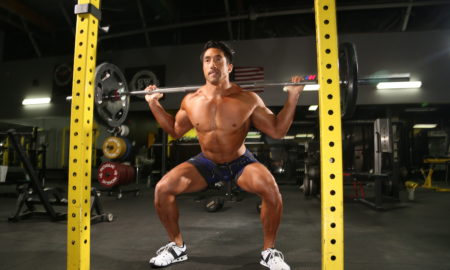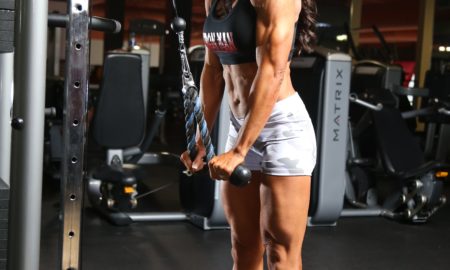It’s been a few years since I’ve taked about simplified training programs, a topic that can address many workout issues, including lifting more weight, avoiding overtraining, achieving a peak performance and avoiding injuries. This month I want to focus on the reasons that working people should consider simplified workouts.
I often hear from patients who work 40 to 60 hours per week, go to school part-time, have a spouse or significant other and perhaps have children about the difficulties of training. The time demands of work, school and family can make regular training difficult.
I recall a patient who had shoulder pain. He was very upset and demoralized because he had difficulty keeping up with professional bodybuilder workouts he’d read about in the magazines. The patient looked as if he’d performed plenty of weight training in his life. When I asked what he did for a living, he responded, “I’m a butcher.” He worked 50 to 55 hours per week, and he had two young children. He knew he needed to work, help raise his children and have time with his wife, but he loved weight training too. If he cut out his workouts, he felt that he was betraying himself and his goals. If he didn’t spend enough time with his wife and children, he felt he wasn’t being a good father and husband. The result was that he felt frustrated at not doing either well.
I had a long talk with him, looking at the physical demands of his profession—not just the hours—to find a suitable program that would keep him training and avoid the aches and pains that were occurring. He needed to acknowledge that he was lifting sides of beef and cutting them into smaller pieces for 50 to 55 hours per week. That didn’t leave much time or energy for training. The new training plan had two components: 1) a simplified program and 2) a change in his training location.
The man could not realistically expect to perform 20 sets per bodypart, two bodyparts per day, six days per week the way the professional bodybuilders he read about did. He didn’t understand their training schedules or that they got adequate sleep each night and had precise nutrition and rest plans.
I advised him to move his training from a commercial gym to a home gym. That would save transportation time to and from the gym. He could assemble a simple home gym in his garage to accomplish all his needs: bench, squat rack, bar, plates, dumbbell rack and perhaps a pulldown pulley setup for multiple exercises. His program was redesigned to feature one key lift and a supplemental exercise each night. By the end of the week he would train his entire body. He did indirect biceps work on his back exercises, and on another night he’d do direct biceps exercises. The same applied to other bodyparts. Most important, if he needed to help his children with their homework or if his wife needed something, he was already home and could help and then resume his workout.
I explained that legendary lifters had simple programs with great results; for example, John Brenner, who performed four lifts only, one lift per workout—and his results included a 550-pound bench press, 800-pound squat, 460-pound power clean and 290-pound power snatch.
Champion powerlifter Ed Coan performed squats on Monday, bench presses on Wednesday and deadlifts on Friday. There were accessory exercises on each workout day. The result is that Coan is one of the greatest powerlifters in history: At 217 pounds he had a 960-pound squat, 520-pound bench press and 860-pound deadlift.
David Shaw is familiar to many who have read this column over the past 20-plus years. Shaw trained four hours per week during his training cycles and three hours per week when he was not competing. His peak lifts included an 800-plus-pound squat, 540-pound bench press, 854-pound deadlift, barbell rows with 500 pounds and concentration curls with 100-pound dumbbells. Shaw said that when you have school, work, a family and a desire to train, it’s better to perform one lift per night than no lifting at all. Those are very wise words indeed.
The butcher was able to train regularly and be with his family. You can still work out and, by avoiding too much training with too little sleep and too much work, you will avoid the aches and pains of doing it without proper recovery.
First train smart, then train hard. That will keep you training.
Editor’s note: Visit www.SoftTissueCenter.com for reprints of Horrigan’s past Sportsmedicine columns that have appeared in IRON MAN. You can order the books, Strength, Conditioning and Injury Prevention for Hockey by Joseph Horrigan, D.C., and E.J. “Doc” Kreis, D.A., and The 7-Minute Rotator Cuff Solution by Horrigan and Jerry Robinson from Home Gym Warehouse, (800) 447-0008, or at www.Home-Gym.com.




















You must be logged in to post a comment Login